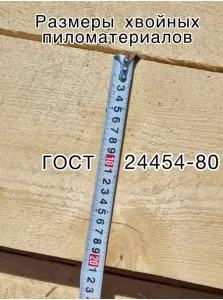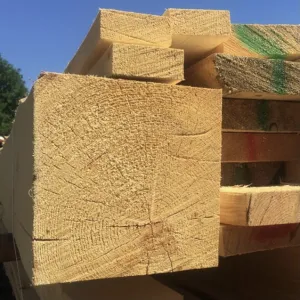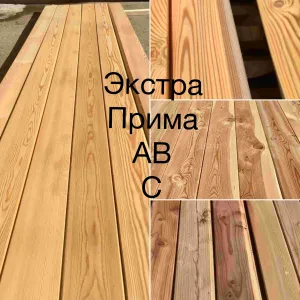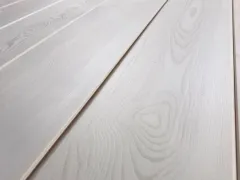
Unveiling Deceptive Practices in the Russian Wood Industry
GOSTs-that-DONT-EXIST-Part-2
Protect Yourself: The Dark Side of Lumber Grading in the Russian Timber Market
How Russian Lumber Sellers Deceive Buyers: The Real Truth About GOST Standards
WARNING! If you have accidentally landed on this page, this is the second chapter. To fully grasp the topic and the depth of the issue at hand, start with the first part: there you will learn the most important thing — GOST standards for lumber are not included in the Unified List of Products Requiring Mandatory Certification of Conformity to GOST (Government Decree No. 2425 of 23.12.2021). We will also discuss how sellers manipulate and misinform by referencing GOSTs, including non-existent ones, and explain where the letters AB, A, B, BC in grading come from, providing a real-life example from our customers as a result of these deceptions.
What’s the Deal with GOST 8486-86?
More and more often, sellers are offering planed boards, cladding, imitation timber, decking, and other milled wood products of any wood species, all while referencing GOST 8486-86. You’ve likely seen such claims on the internet and social media, right? But does this GOST actually apply to the profiled products they are selling on these websites?
GOST 8486-86: Irrelevant to Milled Profiled Products
Let’s start with the fact that there are no divisions and grades such as Extra, Prima, AB, BC, etc., as many sellers claim. You can check this yourself — this GOST is always available on our website. Open it now and take a look!
- Definition and Application of GOST 8486-86: This standard sets technical conditions for sawn softwood lumber, which are products obtained by longitudinal sawing of logs, trimmed on all four sides, with specific dimensions in width and thickness.
- Quality Control and Testing Methods: The quality control and testing methods described in this GOST are intended for sawn lumber. Milled and profiled materials require different quality assessment methods, such as checking profile geometry and surface smoothness.
Standard Object: GOST 8486-86 "Sawn Softwood Lumber. Technical Conditions" applies to sawn lumber like beams and boards obtained by sawing logs. Profiled milled products like cladding, planed boards, blockhouse, decking, etc., are produced through additional processing of this lumber, including drying, calibration, and milling.
- Technical Requirements: The standard describes general technical requirements for dimensions, moisture content, quality grading, but does not cover the specific operations necessary for producing profiled products.
Quality Standards: GOST 8486-86 includes the classification of defects and the quality of lumber, which may not meet the requirements for products intended for visible finishing work, as is often the case with profiled milled products.
GOST 8486-86 is designed for sawn lumber and cannot be applied to milled profiled products. This is to avoid absurd situations and incorrect application of standards.
Why Grading According to GOST 8486-86 is Inappropriate for Milled Profiled Products
Drying: During drying, boards undergo numerous processes. A board can crack, change size, and so on. A dry board is calibrated, losing millimeters, and then planed, turning into planed boards, decking, cladding, and other profiled products. During the milling process, knots, resin pockets, and other defects within the wood can be exposed. These defects can change the grade of the board: an Extra grade can turn into a Prima or even AB.
This is why there is a lot of 3-4 meter long products on the market and fewer 6-meter lengths, especially of higher grades. The milling process reveals defects, and to maintain grading, boards are cut shorter.
The government understands this and realizes that introducing GOSTs for millions of different woodworking products is absurd and impossible. Otherwise, we would run out of wood, and many manufacturing plants would have to close or change equipment, which costs millions, and at large plants and factories, hundreds of millions. It’s absurd.
The absurdity of applying GOST 8486-86 to milled products becomes evident. This standard is not suitable for profiled products. Only those who do not understand the woodworking processes and do not understand the sorting and properties of wood can apply it.
Therefore: If you hear phrases like "GRADE DEGRADATION," "MIXED GRADES," "MISGRADING" and other similar statements, know that such concepts and accusations in relation to milled products are absolutely inappropriate. Such claims are often made by builders, foremen, and others who do not fully understand the manufacturing and grading process of wood. Also, such statements are often used and written to lure you with advertising, by lumber sellers: "Look how honest we are, buy from us, all other sellers on the market are shady, and we are real manufacturers," — playing on your lack of awareness.
Here is an example of such advertising... you see something similar and are sure that this is how it is, especially those who have previously purchased products that didn’t fit or those who were, to put it mildly, disappointed with the quality!
Quality Non-Conformance Accusations — Often Subjective Opinions
Each factory has its own technical conditions and grading. Real manufacturers understand that even batches of the same grade can differ. Boards can be almost knot-free, but different. Factories understand the essence and specifics of working with wood and its grading, which also depends on the human factor. Someone didn’t notice and put a board that should have been in Prima in Extra, or vice versa — got tired and threw an AB into the Extra batch. It happens. We are all human. Even we had an instance where a customer was delighted when they found Extra grade boards in a batch of C grade. Real businesses don’t use such slogans! They use them to attract your attention, especially when many are looking for cheaper products. And such a concept doesn’t exist because there are no regulations or GOSTs for this.
THE ROLE OF THE STATE AND STANDARDS
Currently, there is no separate active GOST for milled and profiled lumber. Therefore, enterprises develop their own technical specifications (TS), based on the requirements and standards applicable to their products.
GOSTs are created by specialists from various fields, including manufacturing enterprises, research institutes, and government bodies. It is a complex and labor-intensive process requiring deep knowledge and experience. They understand the situation at manufacturing enterprises and the absurdity of applying one standard to a wide variety of products. Profiled products have different sizes, angles, shapes, and radii, depending on the equipment and production technology used. Imported equipment — German, Italian, Chinese, used at sawmills and woodworking plants, affects the final size and shape of the products.
We often manufacture products to order to meet your needs, as it can be difficult to find the necessary size on the market. Customers often come to us with problems when the already purchased sizes do not match, and the sellers no longer have the required material. Then we have to manufacture products 2-3-4 mm smaller or wider to match the previously purchased items. This again proves that the vast majority of sellers are not manufacturers, but merely intermediaries selling goods from warehouses with limited stock.
Profiled Products are Regulated by the Technical Specifications (TS) of Each Individual Manufacturer
This is why, without understanding the nuances, you are surprised, and sometimes outraged, thinking that one seller's larch planed board of AB grade costs 1300 rubles per square meter, another’s costs 1450, and a third’s costs 1800, while in flashy advertising, it’s only 900 rub./m2. But few consider that all these planed boards are of completely different quality, especially the ones priced at 900 rubles per square meter. The reality is often the opposite. What’s the difference between TS and GOST for lumber? Click to read.
Putting a Definitive Point!
So that you no longer have the desire to refer to GOST 8486-86 when buying cladding, planed boards, decking, or any other dry milled profiled products, remember: if you refer to this GOST, you may end up with ordinary rough lumber instead of decking, and there will be nothing you can do about it. You asked for this GOST, and you got it!
On the Edge of Good and Evil: Deception and Provocation — A Clear Example!
Loud slogans and flashy words are the emptiness of ignorant marketers who play on your trust but essentially say nothing about the quality of either the material or the supplier.
What Does the Law Have to Do With It? This Has Nothing to Do With Laws!
If you write, refer to a specific law, as we refer to government decrees and letters from the Ministry of Economic Development, existing GOSTs, etc.
Quality Standard? Dimensions According to GOST? All these are empty words! Lumber sizes are regulated by GOST 24454-80, not GOST 8486-86. Those who created the site and the sellers themselves haven’t read any GOSTs! But that’s not the most interesting part — open GOST 24454-80, and you’ll find a very interesting note. Read it, and you’ll be surprised!
And yes, the myth of harvesting in winter is just that — a myth. Smart, educated people with technical degrees, with decades of experience in the forest, conducting tests and defending dissertations, long ago debunked such claims. Read the article "Winter Wood: What Fairytales Marketers Tell You About Timber and What Science Says About It!"
Talking to a Tree or AI? You Decide
Remember, friends, people used to ask the ash tree. As a logger and a person who has been involved in woodworking for over 30 years, I want to tell you that sometimes it’s better and more beneficial to talk to a tree than to AI today!
You’ve already learned that GOST 8486-86 has nothing to do with profiled products. Now let’s see how copywriters and other "geniuses of science and thought" operate. At some point, someone mentioned these GOSTs online without reading them. A copywriter picked it up, then a third, a fourth, naturally, without reading the GOSTs, blindly believing in the "genius."
If they used to copy what they saw somewhere, today they ask neural networks. So let’s talk to a well-known neural network ourselves and ask it about GOSTs. Let’s see the result. Photo… It’s better to leave it without comments: everything is clear and understandable. Scroll right, look to the end — it’s quite amusing up to the grand finale. For full understanding, we specially "screenshot" the ending of previous dialogues, and in the next photos — the beginning of the previous dialogue, so you don’t miss the point.
As you can see, those who write and fill websites ask AI, often copying absurd, unthought, and, most importantly, unverified answers, and fill the site with them. Money is invested in such a site, advertising is paid for, and possibly someone wrote it on forums or Yandex.Zen with its vast reach or on social media. And so, the idea comes directly to you. As a result — a vicious circle of nonsense.
Draw your own conclusions: if you lack your own knowledge, AI won’t help! And how does AI work? Where does it get data from, where does it learn? That’s right, from these very sites, creating a closed loop. Therefore, it’s important to remember: always verify what AI provides. Ancient wisdom says: "Trust but verify."
The only thing the AI got right is that this can lead to breach of contractual obligations, often resulting in financial losses, fines, or even lawsuits. Such a delivery negatively affects the supplier’s reputation, reducing trust from current and potential clients.
HOW TO BUY? Let's Talk in the Context of Milled Products: Cladding, Imitation Timber, Planed Boards, Decking, Etc.
Let’s seriously discuss how to buy lumber and what to consider to avoid disappointment.
Here’s a short guide using the example of milled profiled products: decking, planed boards, cladding, and so on.
Let’s say you are looking to buy decking made of larch.
Ask About the Grades. For example, the most popular grade is AB, as it offers the best balance of price and quality. Ask about knots: what they are like, how many there are, what size they are, and whether they can have cracks. Specify the number of knots per item or per meter, which is important for understanding quality. Note that the Prima grade from different suppliers may be interpreted differently — for some, it may be grade A, for others, something else. Also, ask about the criteria for the Extra grade, which some may market as select or even elite, often used as a marketing trick.
It’s simple, friends. Yes, many find it difficult to understand the grade names: Extra, Elite Extra, Select, or AB. Just say: "I don’t know what you call this grade, but I need real Extra — a board without a single knot! Whatever you call it, I don’t care." Or, if you’re looking for something cheaper, maybe AB or BC — something budget-friendly. It’s important that you understand what you need: no cracks or loose knots, and everything else that’s critically important to you. Ask the seller to send real photos of the product. An honest seller will definitely do this and explain everything in detail!
- Attention to Detail: If you are told about an "average size," think twice — this is not an argument, especially in court. Ask, "Average relative to what: the log or the board itself?" What does "a small number of knots" mean? This could be five or five hundred — it’s all relative.
- Technical Specifications (TS): Every manufacturer should have its own TS, where the grade, defects, their sizes, and quantities are clearly defined. Only then will the court take you seriously if disputes arise.
- Sign a Contract: If you are ordering 50-100 meters or more, don’t be lazy, sign a contract, and make sure it is backed by the technical specifications for the product. Otherwise, if you receive something other than what you need, there will be no chance of returning the product without a headache.
- Be Cautious When Receiving Goods: If you open one pack and find poor boards, that’s one thing, but if you open them all — many will say the goods are non-returnable. You should clarify possible defects and their quantities in advance to avoid misunderstandings. Otherwise, you might end up with substandard goods without a chance to return them if you are not careful before purchasing. Therefore, if the boards were not packed for you, as we often do deliberately, so you can check everything — that’s a plus. But many sellers pack products in a way to hide the flaws and deny the possibility of inspection. In such cases, if you open a pack and find poor boards, returning them will be impossible. A reputable manufacturer is always ready to discuss all details, provide complete information on technical conditions, and talk through grading nuances. Don’t hesitate to ask and demand full product information.
Different Prices for the Same Product
You are looking around and see different prices seemingly for the same product. You’re surprised, and sometimes even outraged, thinking that one seller’s larch planed board of AB grade costs 1300 rubles per square meter, another’s costs 1450, and a third’s costs 1800 rub./m2, while in flashy advertising, it’s only 900. But all these planed boards may differ completely in quality, especially the one priced at 900 rubles per square meter. Few consider that those who price it at 1450 are not villains or resellers.
In search of cheaper options, you often encounter tempting offers that turn out to be scams. But that’s not the main issue. Not all sites update prices promptly: some have had 900 rubles listed for 5 years. Call, ask, and inquire about all the details. And yes, sellers are always flexible, offering discounts.
A knowledgeable seller will always ask about lengths. Often, when you calculate a project, it turns out that you don’t need 6-meter-long planed boards or decking with cladding at all — someone just told you that. In reality, other lengths, like 2-3 meters or even 1.5 meters, are much more suitable and significantly cheaper. You won’t overpay for something you’ll later cut off.
At our production, we often have cheaper products in stock, or if you have a large order volume, we can always discuss and adjust prices. Websites cannot foresee all these situations. You are all unique, and that’s the most important thing. So, price does not always indicate quality and does not always lead to the result you need.
ADVERTISING: THE TRICKS OF SELLERS
- You see loud and flashy claims: "Our C grade with AB quality" and boards that are almost knot-free! It gives you the impression that C grade is a wonderful almost clean board, and everyone else’s products are worse. BUT...
- Let me remind you once again: every factory has its own grading, and we can name the grade whatever we like. And from the advertising, it seems like there is only one factory in the country!
- Ask for the price! Maybe this so-called C grade costs as much as Prima from other sellers or manufacturers.
- Miracles don’t happen — no manufacturer will sell quality knot-free products cheaply. The price of raw materials is more or less the same, and the high grades made from them also come out proportionately. Everyone has production costs and labor costs for producing these boards. The price per cubic meter of the same raw material at the output is also more or less the same.
- Factory grade A or similar. We also have a factory in Kansk and an enterprise in the Moscow region, we don’t have grade A, we have Prima — this does not diminish our factory and our technical specifications. So ask all the questions: defects, the number of knots and flaws... and ask the price of this C grade! Maybe it costs as much as Prima. At our factory, C grade is the worst kind, with some cracks (not through), some loose knots, but a board that needs some work! And someone else might call such grade D, while someone else’s D is real firewood.
- And finally, I’ll say: in advertising photos, the same boards are shown. Look closely. So, is it C grade or factory A?)))
Even when seeing such advertising and tricks — to evaluate the price-quality ratio, you need to ask questions, not jump to hasty conclusions. "Here their C grade is knot-free, while others have a complete mess." Because of such advertising, false stereotypes about grading and product quality are formed, which then spread, and in the end, you — the consumers — are left disappointed and frustrated.
Therefore, accusations of quality non-conformance are often subjective, especially when many are looking for cheaper products. Real factories and enterprises understand that even a batch of Extra grade can differ from another batch of the same grade. Boards can be knot-free, but different. Real manufacturers understand that wood grading is a complex process, depending on many factors, including human ones. That’s why slogans about "grade degradation" and "misgrading" are marketing tricks, not objective reality.
THE COURT EXPLAINS: HOW TO PROPERLY DOCUMENT A PURCHASE TO AVOID PROBLEMS
How important it is to specify in contracts what you want to buy. Disputes over supply often arise regarding the quality of the delivered goods, whether they meet the buyer’s needs. This is especially true if the item must meet specific parameters or if you have higher quality requirements.
How Contracts Are Usually Written:
"The quality of the goods must comply with the requirements of GOST, TS, and technical regulations." In such cases, the rule of the Civil Code of the Russian Federation applies: "The seller is obliged to transfer to the buyer goods whose quality corresponds to the purchase agreement. In the absence of terms on quality in the agreement, the seller must transfer to the buyer goods suitable for the purposes for which such goods are usually used." Courts explain that if the seller was not informed of the purposes for which the goods are supplied and the parameters they must meet, they can deliver the goods of minimally acceptable quality.
IMPORTANT! If the customer/supplier decides not to refer to a specific GOST when forming procurement documentation, they must justify the need to apply other standards or indicators. Nevertheless, the Department recommends specifying a reference to an existing GOST when describing the procurement object. Referring to a non-existent or invalid GOST is strictly prohibited, as stated in the letter from the Ministry of Economic Development dated 16.12.2016 No D28i-3517.
Are You a Proponent of Detailed Descriptions, or Do You Dislike Reading or Signing Contracts? Then in any court, without a contract, there is no conversation! And you will be left with those boards that do not satisfy you, and you will complain and be angry. And you should only be angry with yourself and those who spread all this nonsense — "hearing a bell without knowing where it is" — and really mislead you. And in the end, the boards and we, the manufacturers in Russia, are always to blame for everything. And that those "sellers" sold you boards from three different warehouses and suppliers with different technical specifications, you don’t even realize. Real manufacturers and enterprises are not to blame and don’t even know who sells what and how!
Postscript from the Author:
Return to the first part and look again at those photos with which we started. When you see such sites, ask which strict GOST they work with, and listen to the answer. If you don’t hear what we wrote about in these two chapters, you will get answers about GOSTs that don’t exist! Think about the rest of the recommendations on painting, processing, care... maybe they are just as "professional" as their grades in GOSTs that don’t exist.
Our task was not to blacken anyone. It’s important to understand that our goal is to help you navigate these complexities and choose quality products. Real manufacturers are always ready to answer all your questions and provide all the necessary information. They value their customers and work for long-term relationships, not short-term profits.



















